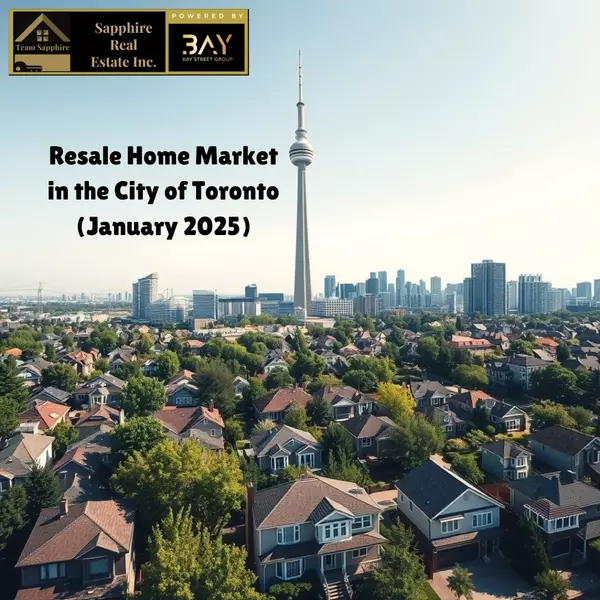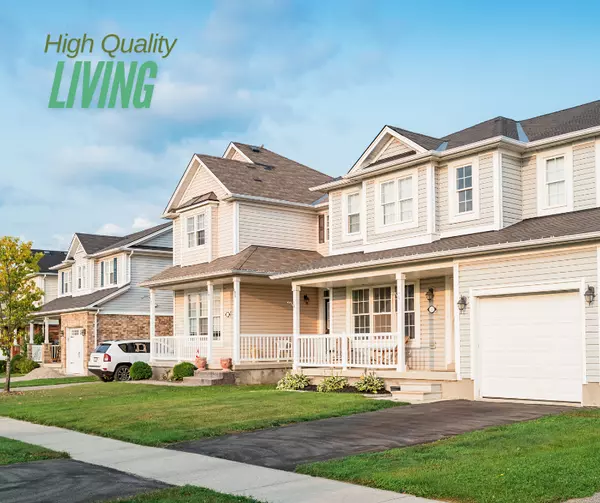What is the Best Place to Buy a Property in Toronto?

Toronto’s real estate market has always been dynamic, and in 2025 it continues to shift with changing interest rates, evolving buyer demand, and significant differences between housing types and neighborhoods. Choosing the “best” place to buy really depends on what you are looking for—affordability, long-term growth, lifestyle, or investment stability. Let’s break down what’s happening in the market right now and highlight the areas that stand out for different types of buyers.
The Market Snapshot in 2025
As of early 2025, the average home price across the Greater Toronto Area sits around $1.09 million. Detached homes, semi-detached, and townhouses are holding their value better than condominiums, which are seeing softer demand and in some cases slight price declines. Condo oversupply is a real factor, giving buyers more negotiating power in that segment.
Inventory is also much higher than a year ago—active listings have risen by nearly 80 to 90 percent compared to 2024 in some months. This means buyers now have more choice and less competition than during the frenzied years of bidding wars. Sales, however, are down by about 20 to 30 percent, showing that buyers are more cautious, often waiting for more stability in interest rates or better affordability conditions. Overall, price growth has slowed, with luxury detached homes holding their premium while mid-range condos remain under pressure.
What “Best Place” Really Means
The best place to buy depends heavily on your priorities. For first-time buyers, affordability and access to transit may matter most. Families often focus on school districts and safety. Investors may prioritize areas with growth potential, new transit lines, or rental demand. Lifestyle-driven buyers might choose walkable, urban neighborhoods with vibrant culture and amenities. Toronto offers different answers depending on which of these categories you fall into.
Emerging Value Neighborhoods
Several neighborhoods within the city are drawing attention in 2025 for their balance of price and potential. Keelesdale, Caledonia-Fairbank, Briar Hill, and Oakwood Village stand out as “hidden gems.” Homes in these areas are generally more affordable than in midtown or the downtown core, with many detached houses available for under or around the million-dollar mark. These neighborhoods are also benefiting from ongoing transit expansion projects, such as the Eglinton Crosstown LRT, which will make commuting easier and boost long-term appreciation.
While these areas may lack the prestige of Rosedale or Forest Hill, they offer real opportunities for first-time buyers and investors looking for growth. Buyers should be mindful that some properties may need renovation, and infrastructure or school options can be more limited than in more established districts.
Scarborough and East Toronto
For buyers looking for more space without paying central Toronto prices, Scarborough and parts of East Toronto provide good value. Detached and semi-detached homes here remain more affordable than in the west end or midtown. With new transit projects underway, connectivity to the rest of the city is improving, making these neighborhoods more attractive. The trade-off can be longer commutes, depending on where you work, but families often find the larger homes and access to parks worthwhile.
North York and Family-Friendly Areas
North York continues to attract buyers who want strong infrastructure, access to schools, and a mix of housing options. While prices are higher than in Scarborough, they remain more reasonable than downtown for the space you get. Family-oriented neighborhoods like Leaside and The Beaches in the east end are also popular thanks to their excellent schools, parks, and community feel, though they come with a significant price premium.
Suburban Options
For those who prioritize affordability and space, moving just outside Toronto can make sense. Cities like Mississauga, Vaughan, Brampton, Ajax, and Oshawa offer newer builds and larger homes for less than what you would pay within Toronto proper. These areas continue to grow as more buyers are pushed outward by Toronto’s high prices. Commuting times can be longer, but transit expansion projects are slowly improving access. The resale market in new subdivisions can be more volatile, so it’s important to research carefully, but for young families or first-time buyers, the suburbs remain a practical choice.
Luxury and Established Neighborhoods
On the other end of the spectrum, Toronto’s luxury neighborhoods such as Forest Hill, Rosedale, Yorkville, and The Beaches remain highly desirable. These areas are known for their prestige, stability, and strong demand from high-net-worth buyers. Prices are steep, often well above the city average, but they carry less risk of price declines compared to more speculative areas. If your goal is long-term security and quality of life rather than dramatic appreciation, these neighborhoods are among the safest bets.
Risks to Keep in Mind
Despite opportunities, buyers should remain cautious. The condo market is facing oversupply, which could keep prices soft in the near term. Mortgage qualification rules and interest rates, though slightly more favorable than in recent years, are still high enough to challenge affordability. Promised transit projects may take longer than expected, which can delay appreciation in certain “up-and-coming” areas. Finally, changes in government policies or taxes can alter the investment landscape.
Conclusion: Where Should You Buy?
If you are a first-time buyer on a budget, emerging neighborhoods like Keelesdale, Caledonia-Fairbank, and Scarborough offer a solid entry point. Families with a focus on schools and safety may find North York, Leaside, or The Beaches more appealing, provided they can handle the higher prices. Investors seeking appreciation might focus on areas near new transit lines or in the suburbs, where population growth continues to drive demand. Luxury buyers, meanwhile, will find long-term stability in established neighborhoods like Forest Hill and Rosedale.
In 2025, the best place to buy a property in Toronto depends not on one universal answer, but on aligning your goals with the right neighborhood. With higher inventory and less competition than in previous years, buyers have more room to explore and negotiate, making this a promising time to find a home that fits both your lifestyle and your financial strategy.
Categories
Recent Posts












